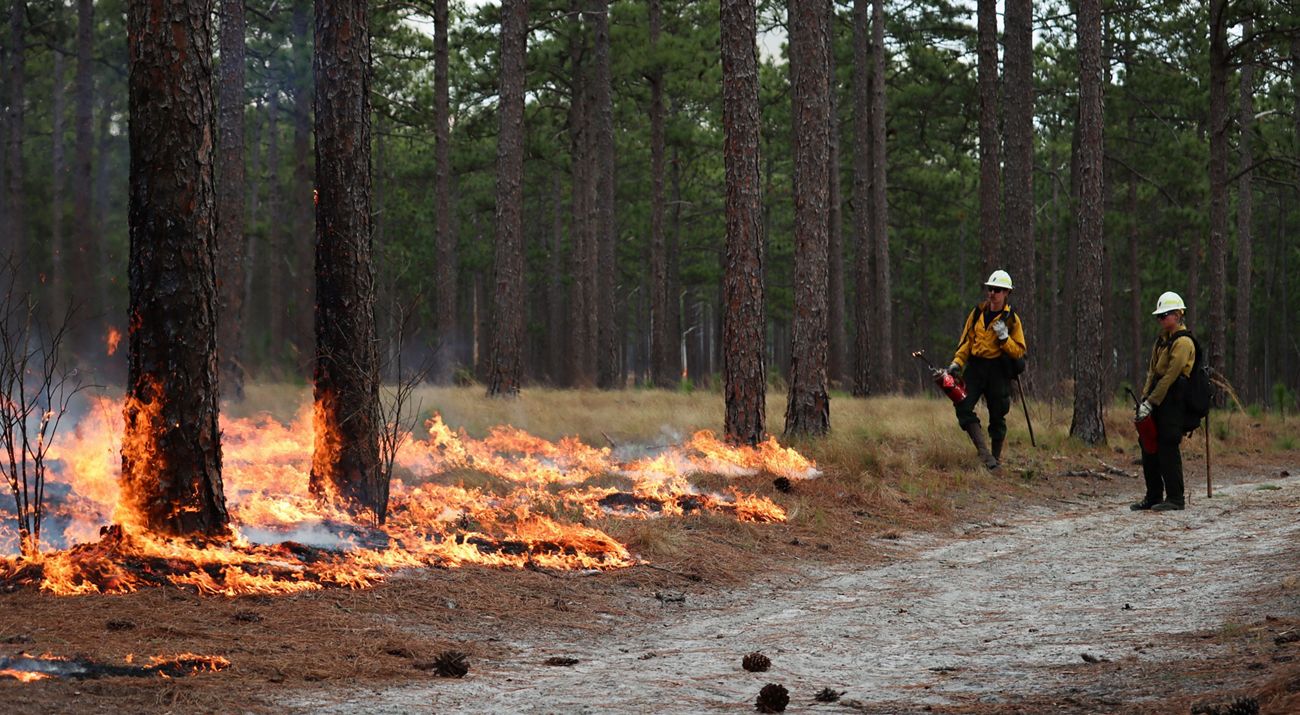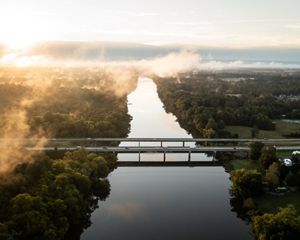Controlled Burn Season Begins January 6
The Nature Conservancy in North Carolina is gearing up for its controlled burn season, which runs from January through August 2025.
Media Contacts
-
Margaret Southern
Phone: (202) 441-2650
Email: Margaret.southern@tnc.org
The Nature Conservancy (TNC) is gearing up for its controlled burn season, which runs January through August. People who live in and near longleaf pine forests from the Sandhills to the Coast may soon see smoke in the air as TNC and its conservation partners conduct controlled burns to restore the forest.
Longleaf pine forests are adapted to frequent, low-intensity fires. These fires knock back shrubs and other vegetation, allowing plants such as Venus flytraps to thrive on the forest floor. Some plants need fire for their very existence; wiregrass won’t reseed unless it is exposed to fire. Fire improves habitat for animals including whitetail deer, bobwhite quail and rare species like the Bachman’s sparrow. Controlled burns also reduce ticks and remove the buildup of fuel that could drive large, damaging wildfires.
Before European colonists arrived, Indigenous People managed the forest with fire. Back then, longleaf pine blanketed 90 million acres from what is now southern Virginia to eastern Texas. As Europeans colonized the region they exploited longleaf pine—harvesting it to build boats and tapping it for its resin. In the 20th century, fire suppression and coastal development also took a toll on longleaf pine forest, until it was eventually reduced to just 3 million acres. Today, TNC and its conservation partners are restoring longleaf pine; there are now 5.2 million acres of longleaf forest in the Southeast.
Most controlled burns are conducted January through May, although some burning will continue through the summer months. TNC crews burn on TNC preserves and help conservation partners with burns on other properties. Other land trusts, local prescribed burn associations and government organizations also burn longleaf forest in the region.
Controlled burns are carefully planned to maximize ecological benefits while minimizing any nuisances such as smoke. Each burn has a specific plan that lays out goals, conditions under which a burn will occur and how the burn will be conducted. Experts monitor the weather and only make a final call to burn at the last minute if all conditions are favorable.
NOTE TO REPORTERS INTERESTED IN LEARNING MORE ABOUT CONTROLLED BURNING: If you are interested in covering a controlled burn in person, please contact Margaret Southern at (202) 441-2650 or Margaret.southern@tnc.org
The Nature Conservancy is a global conservation organization dedicated to conserving the lands and waters on which all life depends. Guided by science, we create innovative, on-the-ground solutions to our world’s toughest challenges so that nature and people can thrive together. We are tackling climate change, conserving lands, waters and oceans at an unprecedented scale, providing food and water sustainably and helping make cities more resilient. The Nature Conservancy is working to make a lasting difference around the world in 81 countries and territories (40 by direct conservation impact and 41 through partners) through a collaborative approach that engages local communities, governments, the private sector, and other partners. To learn more, visit nature.org or follow @nature_press on X.



